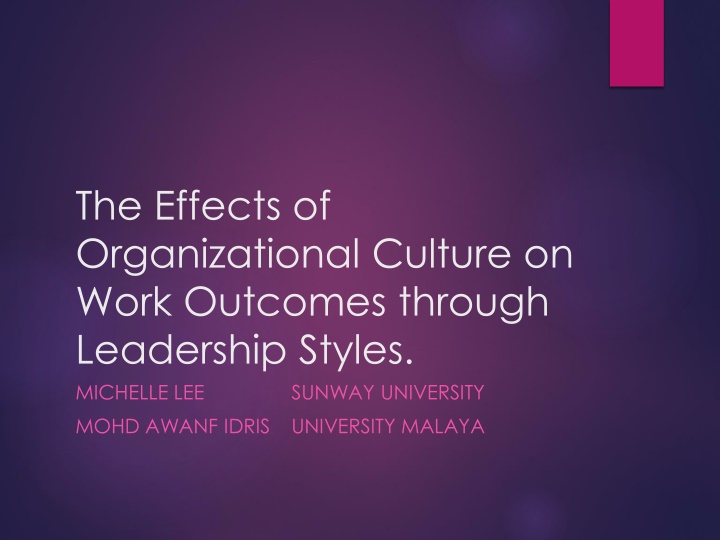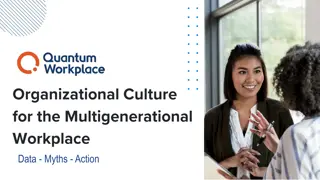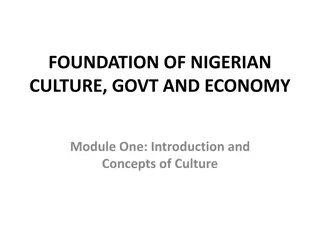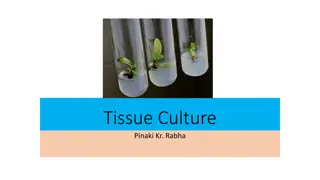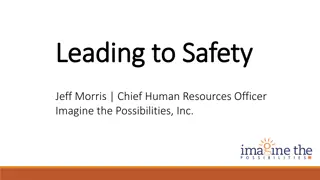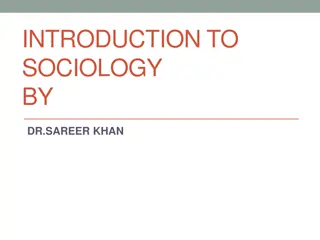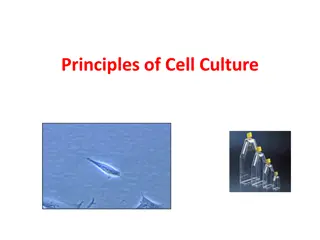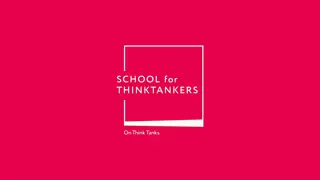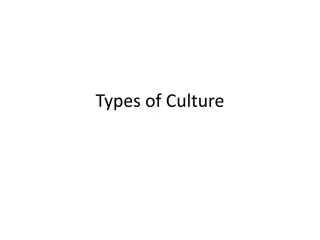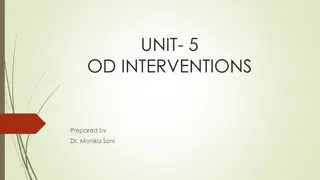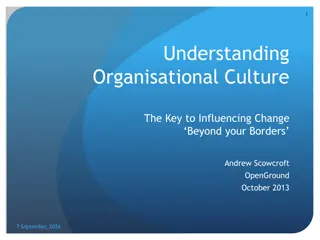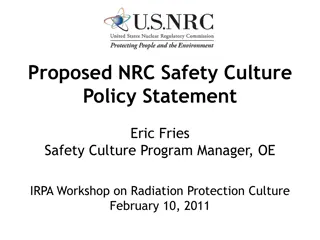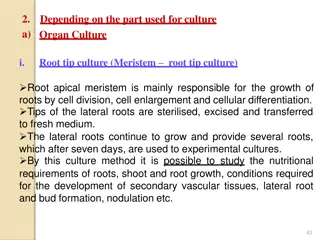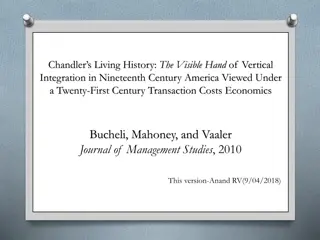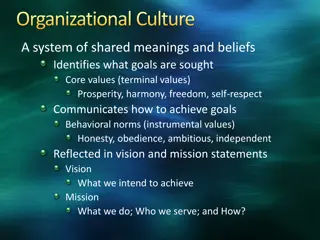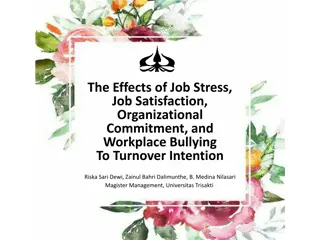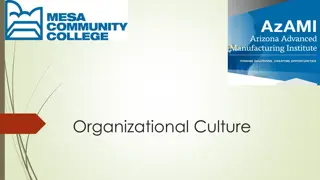Effects of Organizational Culture on Work Outcomes
Examining the impact of organizational culture on work outcomes through different leadership styles, particularly in the Asian context. Focus on the fit between organizational culture and leadership style, with insights on hierarchical organizational culture and transformational leadership. Discusses the relationship between specific leadership styles and employee outcomes.
Download Presentation

Please find below an Image/Link to download the presentation.
The content on the website is provided AS IS for your information and personal use only. It may not be sold, licensed, or shared on other websites without obtaining consent from the author.If you encounter any issues during the download, it is possible that the publisher has removed the file from their server.
You are allowed to download the files provided on this website for personal or commercial use, subject to the condition that they are used lawfully. All files are the property of their respective owners.
The content on the website is provided AS IS for your information and personal use only. It may not be sold, licensed, or shared on other websites without obtaining consent from the author.
E N D
Presentation Transcript
The Effects of Organizational Culture on Work Outcomes through Leadership Styles. MICHELLE LEE SUNWAY UNIVERSITY MOHD AWANF IDRIS UNIVERSITY MALAYA
Focus of the Study Examine the fit between organizational culture to direct leadership style on employees outcome, specifically the Asian context.
Definitions & Variables Organizational culture as the shared beliefs, perceptions, and expectations of individuals in organizations. (Boan, 2006) Hierarchical organizational culture implies a very top-bottom hierarchy system whereby authority is valued and cherished Very systematic procedure Not being questioned or voice out. (Cameron & Quinn, 1999)
Transformational leadership style Intellectual stimulation, Individualized consideration, Inspirational motivation Idealized influenced Transactional leadership style which includes Contingent reward, Active and passive management by exception and Laissez-faire leadership. (Bass, 1985)
Thus Far Different organizational culture used different leadership style (Giritli, Oney-Yazici, Topcu-Oraz, &Acar, 2013) 3 types leadership, which are, Strategic leadership, ones create the vision of the organization (CEO, COO, CFO) Organizational leadership higher managerial posts (GM, marketing manager, regional manager) Direct leadership who execute the plans to make sure they are effective (National Defense University, 2012) Strategic leadership is often = organizational culture (Giberson et al., 2009), Organizational culture, organizational climate and leadership style: Fundamental building blocks for explaining & analysing organization phenomena (Schein, 2000); extension of knowledge on organizational behaviour literature (Ashkanasy, 2003; Ashkanasy, & Jackson, 2001; Cooper, Cartwright, & Earley, 2001).
Transformational often obtain a favorable outcomes than transactional leadership. TFL higher Leader- Member relationship (Wang, Law, Hackett, Wang, & Chen, 2005). Southeast Asian managers to be more directive and more transactional (Gill, 1998) Malaysian workplace: Collectivistic, relationship oriented, & hierarchical. (Abdullah, 1994) Issue: Horizontal-individualistic context (e.g. Western) than in vertical-collectivistic (eg. Asian) contexts (Rockstuhl, Shore, Ang, & Dulebohn, 2013). Weese (1996) found organizational culture as an effect towards organizational effectiveness rather than leadership style Giritli, Oney-Yazici, Topcu-Oraz, and Acar (2013) also confirmed the presence of organizational culture in determining the appropriate leadership styles to practice within organization.
Gap of the Study Upper levels factors (organizational climate, organizational culture, leadership style) were not well researched in the Asian context (Ojo, 2012). The importance of leader-culture fit framework in work outcomes (Nieminen, Biermeier-Hanson, Denison, 2013; Sackmann, 2011) Giberson et al., (2009) :Strategic leadership is often = organizational culture :Most researches place focus on organizational leadership, with least on direct leadership Direct leadership has the most direct effect on employees (Hogan, Curphy, & Hogan, 1994).
Theoretical Approach Social Information Processing Theory (Salancik & Pfefer, 1978): Environment on behavior Group Effect(Schulte, Ostroff, & Kinicky, 2006) : Group members on attributes & perception Interactionalism (Mischel s, 1977)
Level 2 Level 1 Job H3 Performance Direct H1 Transformational Leadership Hierarchical Organizational Culture Work Productivity H2 Direct Transactional Leadership Job Satisfaction H4: Mediation Effects
Method Participants 256 participants, of 41 teams (male:46%; female:54%) Malaysia Instruments Organizational Culture (OCAI, Cameron & Quinn, 1999); Transformational and Transactional Leadership (MLQ, Bass & Avolio, 1990); Job Performance (Hochwarter et al, 2006); Work Productivity (HPQ, (Kessler et al., 2003), Job Satisfaction (COPSOQ, 2003) Procedure Analyses Rwg, ICC, HLM, Monte Carlo test
Table 1 Means, standard deviations, reliability, and Pearson bivariate correlations Variables Mean 1. Hierarchy Culture 26.31 2. Transformational Leadership 35.49 3. Transactional Leadership 14.56 4. Job Performance 22.38 5. Productivity 21.99 6. Job Satisfaction 15.20 Note. * p < .05, ** p < .01, *** p < 0.001. N=256, team = 41 S.D. 5.18 4.23 1.93 3.15 3.64 5.04 No. Items 6 12 5 6 4 4 1 1 2 3 4 5 6 0.66 0.95 0.87 0.86 0.78 0.77 -0.18** -0.2** -0.18** -0.15* -0.19** 1 .86** .31** .32** .45** 1 .30** .29** .39** 1 .44** .28** 1 .31** 1
Level 2 Level 1 Job Performance =.11*** Direct Transformational Leadership =-.29 Hierarchical Organizational Culture =.14*** Work Productivity =.25*** Direct =.30*** =-.13*** Transactional Leadership =.09*** =.19*** Job Satisfaction
Level 1 Level 2 Job Performance =-.14* Hierarchical Organizational Culture Work =-.19* Productivity =-.07 Job Satisfaction
Level 2 Level 1 95% CI, LL= -0.0749, UL= 0.0004 Direct Transformational Leadership =.11*** Hierarchical Organizational Culture Job Performance Direct =.25*** Transactional Leadership 95% CI, LL= -0.0727, UL= -0.0028
95% CI, LL = -0.091, UL= 0.0000 Level 1 Level 2 Direct Transformational Leadership =.14*** Hierarchical Organizational Culture Work Productivity Direct =.30*** Transactional Leadership 95% CI, LL= -0.0812, UL= -0.0042
Level 1 Level 2 95% CI, LL= -0.9102, UL= 0.0006 Direct Transformational Leadership =.09*** Hierarchical Organizational Culture Job Satisfaction Direct =.19*** Transactional Leadership 95% CI, LL= -0.05, UL= -0.002
Discussion Transformational leadership supported previous researches Surprisingly, transactional too It is plausible to explain that there is no fixed leadership that can shaped and determined the outcomes, it usually comes with a set of prescribed underlying indirect effect, though it is still very much unclear about (Bass, 1995). Leader-culture fit framework in work outcomes (Nieminen, Biermeier-Hanson, Denison, 2013; Sackmann, 2011) Hierarchical culture had a negative relationship with all variables Transformational leadership did not show mediation but transactional did. Moderator to further test the model
